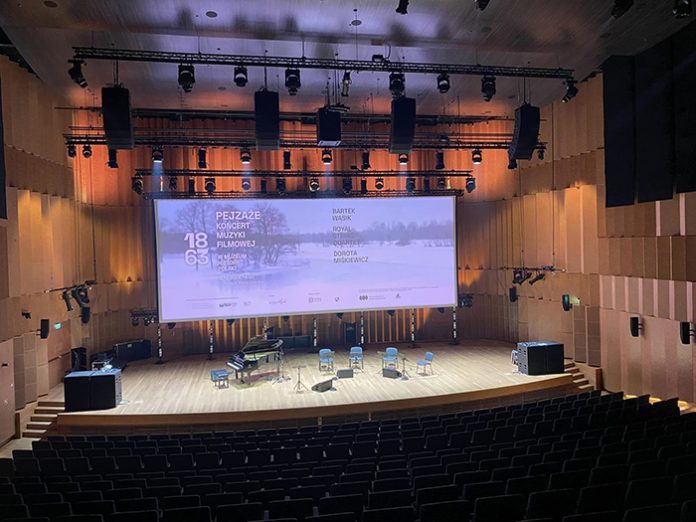With a coveted Prix Versailles win under its belt, the Muzeum Historii Polski (The Polish History Museum) has succeeded in its goal to grab world attention to present the country’s history.
Serious in its pursuit of visitor engagement and experience, the museum wanted the highest levels of immersive suspension and chose the submission by ESS Audio, Polish distribution partner for TiMaxSpatial, to be the implemented audio integration.
Two TiMax SoundHub spatialisation engines were deployed separately across two performance venues to create sophisticated object-based soundscapes rendered by the platform’s exclusive dynamic delay-matrix processing.
The Polish History Museum is just one of several significant TiMax installations ESS Audio has executed since undertaking the distribution for Poland just a few years ago.
In each of the spaces, the multifunctional ‘Auditorium Hall’ and the ‘Cinema and Theatre Hall’, ESS Audio installed flexible distributed immersive systems built around the spatial audio capabilities of TiMax to ensure a very authentic and natural soundscape, offering every visitor the same level of acoustic experience. Additionally, a sound and video production studio and modern conference rooms are equipped with the latest AV solutions.
One of the biggest challenges ESS Audio had to contend with was the beautiful architecture. Bestowed with such lively interior acoustics, the TiMax distributed and targeted spatial audio solution helps to tame the space. The result is an immersive implementation the gives the impression of the sound system interacting with the natural acoustics of both spaces.
Amongst other events, The Auditorium Hall is used to host acoustic and classical concerts. ESS Audio’s Maciej Barański confirmed: “The immersive system is very helpful in this case to obtain the natural sound of acoustic instruments and high ‘audio resolution’ for each listening position.”
Barański added: “We opted for TiMax due to the naturalness of the sound and we have seen that producers appreciate the simplicity of work when mixing sound here. In addition, the possibility of very suggestive identification of the sound source coinciding with the physical location on the stage elevates the listening experience for the audience which adds to the sophistication and appeal of the venue.”
The Cinema and Theatre Hall is intended for theatre performances where the vocal localisation of the actors is crucial, and the TiMax on-board 64-track playback engine also gets used for sound effects for productions.
ESS Audio implemented a predominantly live performance spatial sound system in the Auditorium Hall, where TiMax drives a system comprised of four hangs of JBL VTX A8 loudspeakers with front fill supplied by JBL VTX A6 loudspeakers supported by JBL VTX B18 sub-bass units. Delay through the space is handled by JBL CBT70 supported by Sonance PS-C83T ceiling-installed speakers. The sound mix is handled by DiGiCo Quantum 338 and 225 desks.
The Cinema and Theatre Hall features a similarly configured but smaller system, also with a JBL speaker system spatially processed by TiMax feeding Crown amplification and BSS Audio DSP via Dante signal distribution. A Yamaha CL5 and CL1 integrate with TiMax via MIDI.
Barański confirmed: “Thanks to TiMax processors, there are no better or worse seats in either room. The audience could hear the same sound scene for each of them.”
He concluded: “The museum is a very multifunctional space. Each hall has a cinema function and enables the organization of acoustic concerts thanks to active and amplified reverberation time control systems. With TiMax at the heart of the system, the sound system can be easily reconfigured to suit whatever happens in the space.”
“Both the end user of the system and sound engineers who had the opportunity to work with it rate the installation very positively, emphasizing the naturalness of the sound and the highly suggestiveness of the immersive effect.”





